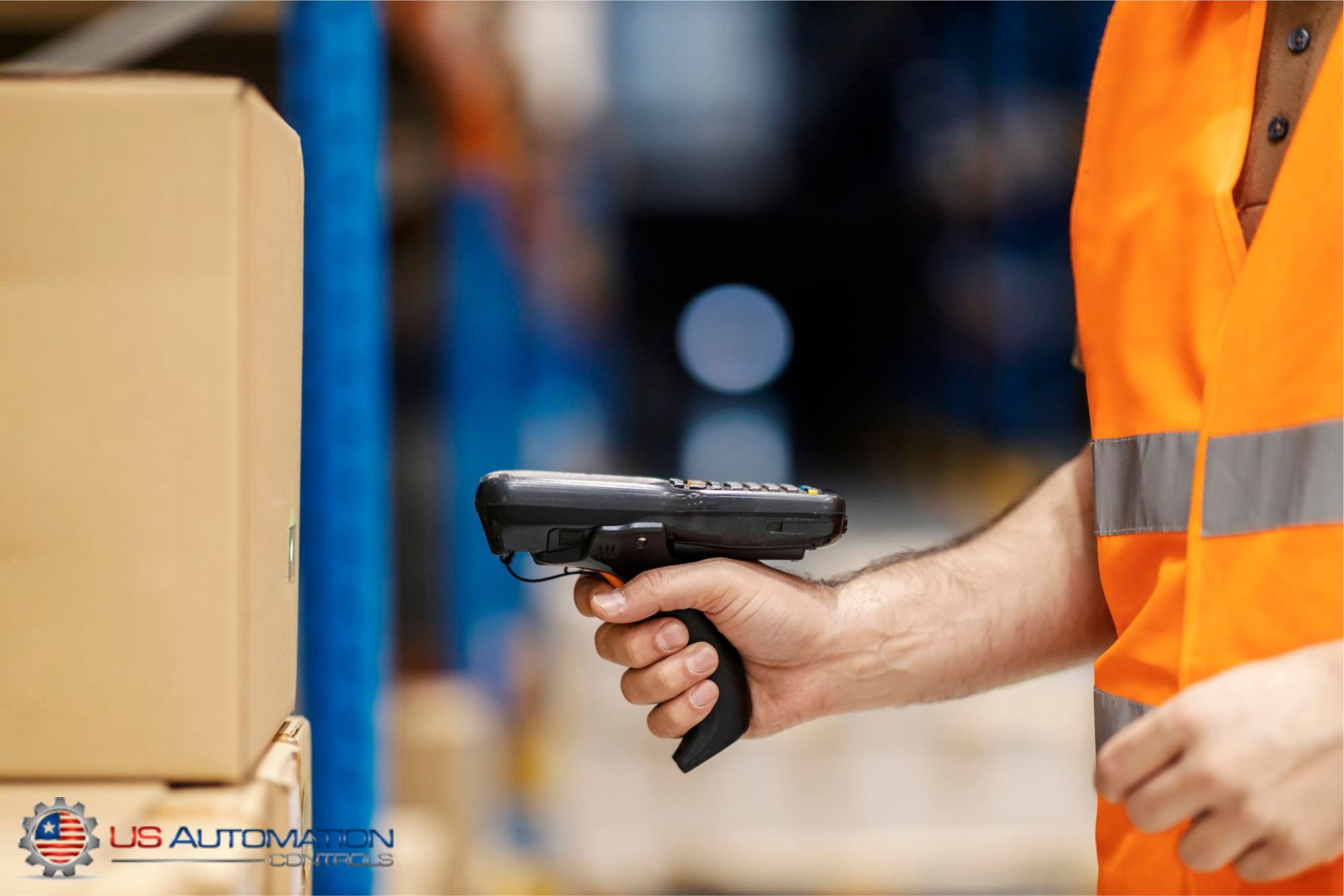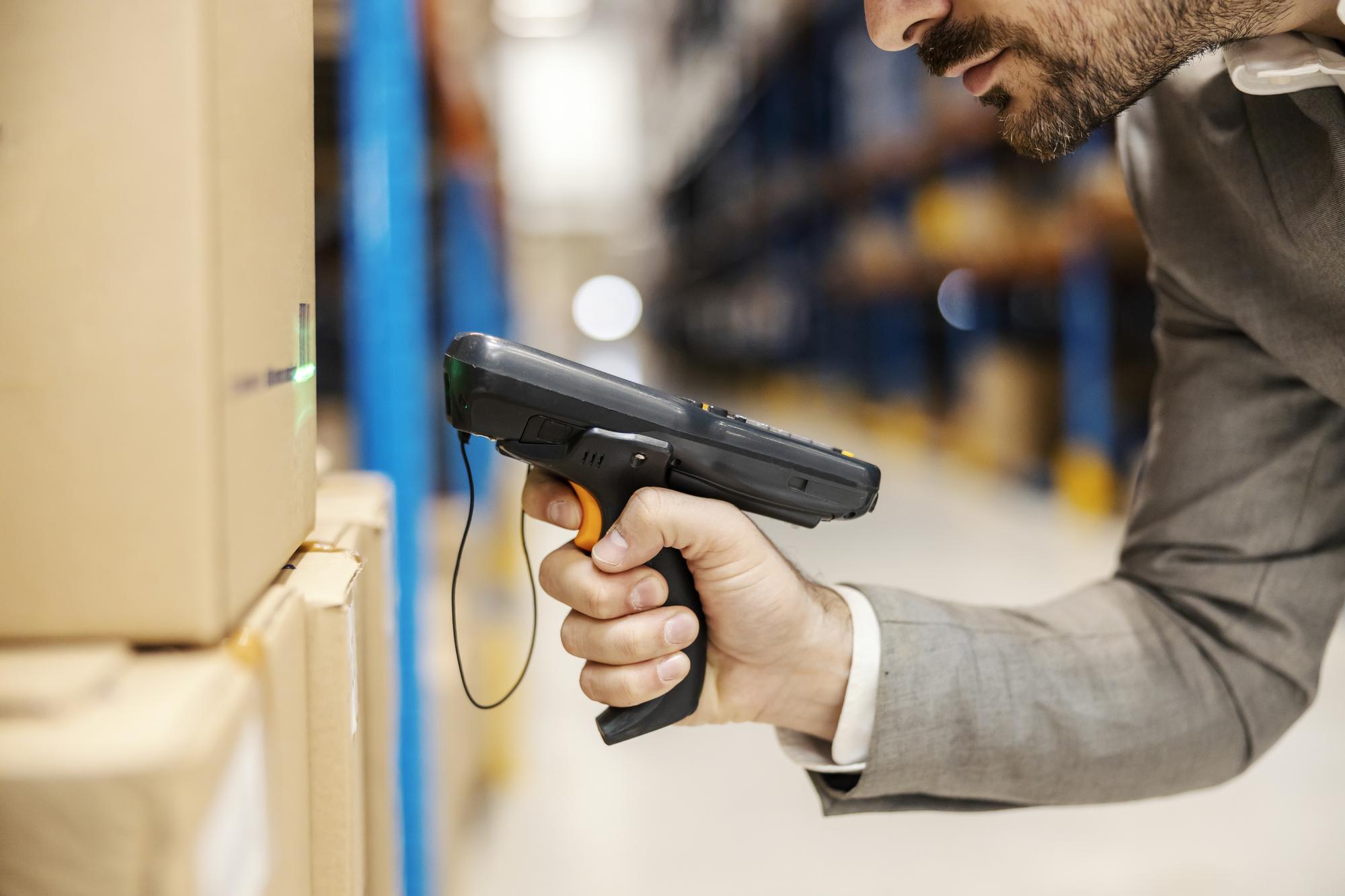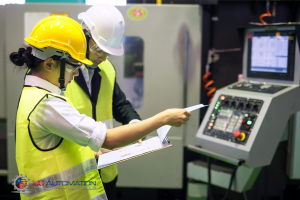How a Barcode Positioning System Works

At the heart of every successful business lies an almost invisible hero: the barcode positioning system. Often overlooked, yet indispensable, this technology serves as the backbone of inventory management, seamlessly coordinating the movement of stock from shelves to the hands of happy customers. A convergence of software and hardware, barcode positioning systems possess the remarkable ability to streamline operations. But how exactly do they work their magic? Let's delve into the intricacies and uncover their secrets.
The Components That Make up a Barcode Positioning System
The Barcode Tape
A fundamental part of a barcode positioning system, the barcode tape is a row of barcodes that is applied to a surface. Be it flat or curved, the barcode tape can be bonded to almost any surface. The barcode tape can be simply affixed along the travel path of a device. As mentioned previously it can be easily mounted on any surface curved or flat, such as those found on electrical monorail systems.
The tape is made of a resilient material made for industrial use therefore it will not be damaged easily. The barcode tape is made up of alternating dark and light lines with the dark lines reflecting less light than the space in between. The reading unit detects the variation in light levels.
The Reading Unit
The barcode scanner is the device responsible for capturing the barcode's image and converting it into digital data. The scanner typically uses a visible red laser mounted in a manner where it can capture multiple barcodes at once. This makes the system more reliable.
Software
Data captured by the scanner needs to be processed and decoded to be integrated into any database system, this database can be used for analytics, inventory management, and more.
Network Infrastructure
In many cases, a barcode positioning system, and the previously mentioned database may be connected to a broader network for real-time data transmission.
How Barcodes Are Scanned
The measuring sensors are attached to a device like an electric monorail or an automatic stacker crane. The reading unit shines a light on the barcode while moving along with the device and detects the amount of light that is reflected.
It interprets the widths and spacings between the lines and then translates them into a binary code that corresponds to specific characters or numbers, calculating the absolute position data stored in the barcode with millimeter accuracy. The sensor uses the data as a digital measuring tape to find its exact location.


The Data That a Barcode Can Store
Barcodes use a geometric pattern to store and carry information, that is how a barcode works.
Barcodes come in different formats each with its encoding standard. The most common type is known as a 1D, or one-dimensional barcode made up of parallel dark and light lines with varying widths. This type of barcode only holds a little information and typically contains alphanumeric characters. You can find this kind of barcode everywhere, such as retail stores and supermarkets that use barcode inventory systems.
Two-dimensional (2D) barcodes can store significantly more data in a smaller space. These barcodes, such as QR codes a pattern in a square and use geometric shapes to encode data. QR codes can store not only alphanumeric characters but links, URLs, images, and even more! Even some barcode positioning systems use QR codes instead of 1D barcodes. Barcodes are an efficient way of carrying information enabling swift and accurate identification of items.
Real-World Applications & Benefits
The adoption of barcode positioning systems has revolutionized the industry of inventory management, but that should come as no surprise considering the massive benefits such as:
Accuracy
By automating the process human error is out of the equation. The job is done fast, accurately, and safely.
Safety
As mentioned before, safety is a bonus as well. Many barcode positioning sensors have safety features that can prevent workplace injuries.
Efficiency
By scanning and having all information in a database everything can be monitored in real-time. The process of tracking current stock for sending out orders or restocking becomes streamlined and easy.
Inventory Visibility
Barcode systems provide real-time visibility into inventory levels, locations, and movements, empowering businesses to make informed decisions and optimize stock levels.
Traceability and Compliance
With everything in a database, you can easily track where stock is and where it should be. Barcode systems allow easy tracking of products in a supply chain. In some industries, this can be essential for quality control and workplace compliance.
Cost Savings
The ability to track stock comes into play with cost savings too. For example, by monitoring how much stock you have and how much has been sold in a given timeframe, you know exactly the quantity of stock you need, preventing overstocking.
Scalability
If your business grows, you can easily scale a barcode inventory system, making it a viable option for a business of any size.
Integration with other Systems
Barcode systems play a big role in an efficient business by seamlessly integrating with a myriad of business systems. These include enterprise resource planning (ERP) software, serving as a comprehensive solution for managing various aspects of a business. Additionally, barcode systems interface smoothly with warehouse management systems (WMS), which is a specialized software designed to streamline and optimize warehouse operations. They also integrate seamlessly with point-of-sale (POS) systems, combining software and hardware to facilitate smooth transactions between businesses and customers at the point of purchase. This convergence of technologies facilitates end-to-end process automation and ensures seamless data synchronization throughout the entire business.
Deployment
Deploying a barcode positioning system for your business can become a challenge, but we're here to help you plan and integrate it into your systems correctly. You first need to choose the right barcode system for your business, and then the necessary software and networking for it. This is followed by the actual mounting of the hardware, cabling and power management, and the software installation. The entire process can be done in 2 weeks to a month.
Conclusion
For better or worse the lifestyle we live today is dependent on technology. Every aspect of our lives is influenced by technology and you either get ahead of the curve or drag behind. Business and inventory management is no exception. Barcode positioning systems are truly a marvel of engineering, fusing hardware and software to elevate efficiency to a new level.
A barcode positioning system will allow your business to handle even more stock and achieve even greater revenue. From retail and manufacturing to healthcare and logistics, barcode technology continues to play a pivotal role in modern supply chains. As technology advances and innovations emerge, the barcode positioning system remains a cornerstone of inventory management in this ever-evolving industry.
We’re Here to Help!
US Automation Controls offers various barcode positioning systems by reputable brands such as Leuze Electronics. We offer sensors for positioning stacking cranes, monorail systems, and such. Contact us now if you need any assistance in making the best choice for your business. Click here to visit our store.




